Peregrine falcons (Falco peregrinus) are renowned for their remarkable adaptability and global distribution. These majestic birds of prey have captured the imagination of humans for centuries with their incredible speed and aerial prowess.
From towering cliffs to bustling urban landscapes, peregrine falcons have managed to establish themselves in diverse habitats across the world. But what makes peregrine falcons so widespread?
In this article, we will delve into the factors that contribute to the remarkable success and widespread distribution of peregrine falcons. We will explore their unique physical attributes, hunting strategies, and adaptability to various environments.
Join us as we unravel the secrets behind the global dominance of these awe-inspiring birds, shedding light on their extraordinary journey from the skies to our hearts.
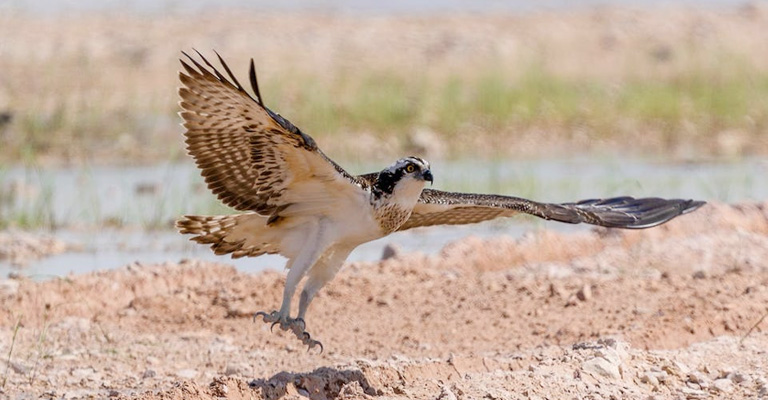
What Makes Peregrine Falcons So Widespread?
Peregrine falcons (Falco peregrinus) are renowned for their remarkable adaptability and widespread distribution across the globe. Their ability to thrive in diverse habitats can be attributed to several key factors. Let’s explore these factors in detail:
Exceptional Flight Capabilities
Peregrine falcons possess incredible flight capabilities, enabling them to cover vast distances and explore various habitats.
They are known for their exceptional speed, reaching speeds of up to 240 miles per hour (386 kilometers per hour) during hunting dives, making them the fastest birds in the world.
This speed allows them to efficiently traverse different landscapes and adapt to changing environmental conditions.
Wide Range of Habitats
Peregrine falcons have a broad ecological tolerance, allowing them to inhabit a wide range of habitats across the globe. They can be found in diverse environments, including coastal regions, deserts, grasslands, tundra, mountains, and even urban areas.
This adaptability is due to their ability to exploit different food sources and nesting sites, making them highly versatile in their habitat selection.
Varied Prey Base
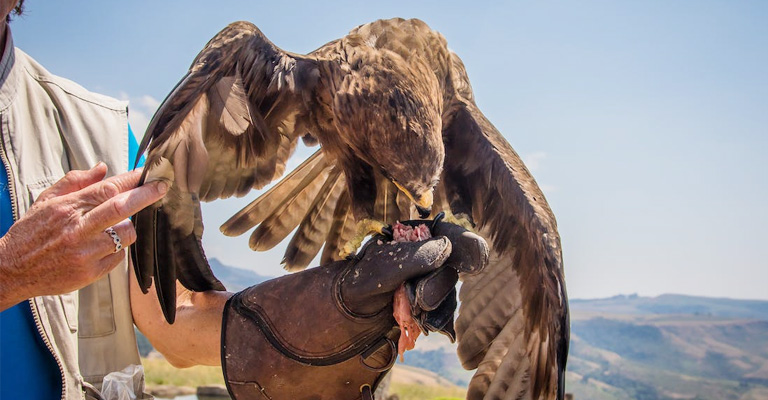
Peregrine falcons are opportunistic hunters with a diverse prey base. They primarily feed on medium-sized birds, such as pigeons, doves, and waterfowl.
However, they are known to adapt their diet based on local availability, which contributes to their widespread distribution.
In urban areas, they often prey on feral pigeons, while in coastal regions, they may target seabirds and shorebirds. This flexibility in their diet allows them to thrive in various ecosystems.
Adaptability to Urban Environments
Peregrine falcons have demonstrated a remarkable ability to adapt to urban environments, making use of tall buildings and bridges as substitute cliff ledges for nesting.
Urban areas provide an abundant food supply, with feral pigeons and other urban birds serving as their primary prey.
The availability of suitable nesting sites and an ample food source has facilitated their successful colonization of cities worldwide.
Wide Breeding Range
Peregrine falcons have an extensive breeding range that spans all continents except Antarctica.
They breed in a variety of habitats, including cliffs, rocky outcrops, and tall structures. This wide breeding range contributes to their overall distribution, as they can establish populations in different regions and adapt to local conditions.
Conservation Efforts
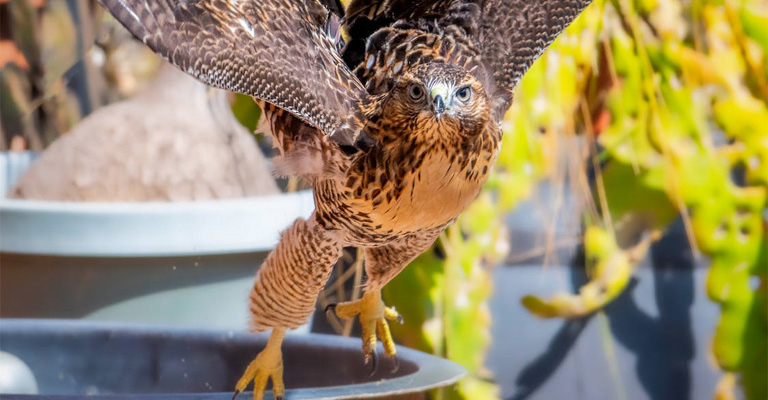
Conservation efforts have played a significant role in the recovery and expansion of peregrine falcon populations. In the mid-20th century, peregrine falcons faced a severe decline due to the widespread use of pesticides, particularly DDT, which caused thinning of their eggshells.
However, after the ban on DDT and subsequent conservation measures, their populations rebounded. Reintroduction programs and habitat protection initiatives have further contributed to their widespread presence.
Migration and Dispersal
Peregrine falcons are known for their migratory behavior, with some populations undertaking long-distance journeys. They breed in the northern regions during the summer and migrate to warmer areas during the winter.
This migratory behavior allows them to occupy a vast range of habitats throughout the year, contributing to their widespread distribution.
The widespread distribution of peregrine falcons can be attributed to their exceptional flight capabilities, adaptability to various habitats, diverse prey base, ability to thrive in urban environments, wide breeding range, conservation efforts, and migratory behavior.
Where Are Peregrine Falcons Most Common?
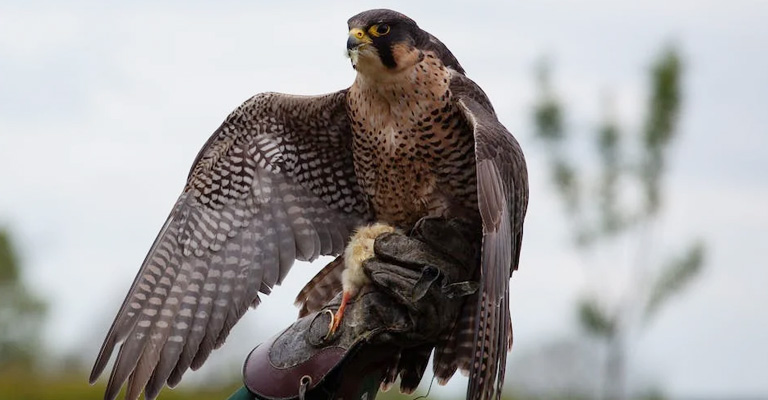
Peregrine falcons (Falco peregrinus) are found in various regions around the world, but they tend to be most common in the following areas:
Cliffs and Mountainous Regions
Peregrine falcons are well-known for their affinity for nesting on cliffs and rocky outcrops. They are often found in mountainous regions, such as the Himalayas, the Alps, the Rocky Mountains, and the Andes.
These areas provide suitable nesting sites and ample prey opportunities for these aerial predators.
Coastal Areas
Coastal regions are another favored habitat for peregrine falcons. They can be found along coastlines, sea cliffs, and offshore islands.
These areas offer a diverse range of prey, including seabirds, shorebirds, and waterfowl. Peregrine falcons are particularly adept at hunting in these environments, utilizing their speed and agility to capture prey in flight.
Urban Environments
In recent years, peregrine falcons have adapted to urban environments, including cities and towns. They have been observed nesting on tall buildings, bridges, and other man-made structures.
Urban areas provide a steady food supply, with pigeons and other urban-dwelling birds serving as their primary prey.
Peregrine falcons nesting in cities have become a symbol of successful conservation efforts and the ability of wildlife to coexist with human development.
Tundra and Arctic Regions
Peregrine falcons are also found in tundra and Arctic regions, including northern parts of North America, Europe, and Asia.
They breed in these remote areas during the summer months, taking advantage of the abundance of prey, such as lemmings and other small mammals.
During the winter, some peregrine falcons migrate to more temperate regions, while others remain in their Arctic habitats.
Grasslands and Open Country
Peregrine falcons can be found in grasslands, savannas, and open country habitats. These areas provide opportunities for hunting small to medium-sized birds, such as larks, pipits, and waterfowl.
Peregrine falcons in these habitats often utilize elevated perches, such as trees or utility poles, to scan for prey and launch their high-speed aerial attacks.
Overall, peregrine falcons can be found in a wide range of habitats, including cliffs and mountainous regions, coastal areas, urban environments, tundra and Arctic regions, as well as grasslands and open country.
Their adaptability to diverse habitats is a testament to their remarkable ability to thrive in various ecosystems around the world.
What Are the Biggest Threats to Peregrine Falcons?
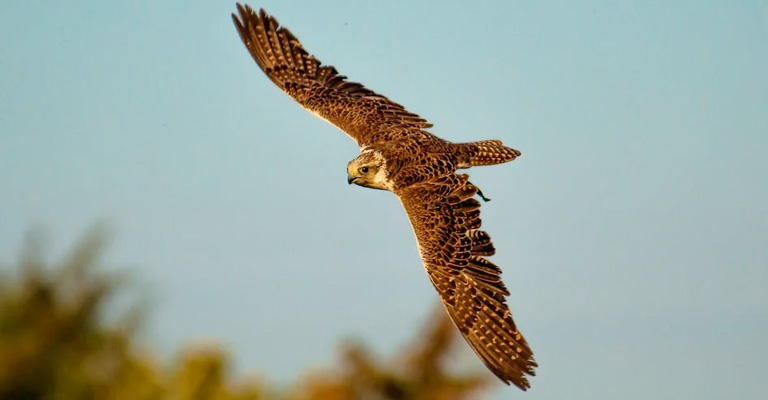
The peregrine falcon, known for its incredible speed and agility, faces several threats that endanger its population. These threats can be categorized into natural and human-induced factors. Let’s explore some of the biggest threats to peregrine falcons:
Habitat Loss and Fragmentation
One of the primary threats to peregrine falcons is the loss and fragmentation of their natural habitat.
Urbanization, deforestation, and agricultural expansion have resulted in the destruction of nesting sites and reduced availability of suitable hunting grounds. As a result, peregrine falcons struggle to find adequate spaces to breed and hunt.
Pollution
Pollution, particularly the accumulation of toxic chemicals, poses a significant threat to peregrine falcons. These birds are high up in the food chain, and as such, they are susceptible to bioaccumulation of pollutants such as pesticides, heavy metals, and industrial chemicals.
These toxins can lead to reproductive issues, weakened immune systems, and reduced breeding success.
Climate Change
The changing climate patterns have adverse effects on peregrine falcons. Rising temperatures, altered precipitation patterns, and extreme weather events can disrupt their breeding cycles and affect the availability of prey.
Climate change also impacts the migratory patterns of their prey species, potentially leading to food scarcity for the falcons.
Illegal Hunting and Poaching
Despite legal protections, peregrine falcons are still targeted by illegal hunting and poaching activities.
These birds are highly valued in falconry and illegal wildlife trade markets. The demand for peregrine falcons, especially for use in traditional hunting practices, puts additional pressure on their populations.
Collisions with Man-Made Structures
Peregrine falcons are known for their impressive aerial hunting skills, which often lead them to fly at high speeds.
Unfortunately, this behavior puts them at risk of colliding with man-made structures such as buildings, power lines, and wind turbines. These collisions can result in severe injuries or fatalities for the falcons.
Disturbance and Nesting Site Disruption
Human activities, such as recreational activities and construction projects, can disturb peregrine falcons during their breeding season.
Disturbances near nesting sites can cause stress, abandonment of nests, or even the failure of breeding attempts. The disturbance of nesting sites can also lead to the displacement of falcons, further impacting their population.
Predation and Competition
Peregrine falcons face predation and competition from other bird species. Nest predation by larger raptors, such as eagles and owls, can reduce the reproductive success of peregrine falcons.
Additionally, competition for nesting sites and food resources with other bird species, such as gulls and crows, can further threaten their survival.
FAQs
Peregrine falcons have exceptional eyesight, allowing them to spot prey from great distances.
They use a hunting technique called “stooping,” where they dive at high speeds from great heights to catch their prey in mid-air. Their speed and agility make them one of the fastest birds in the world.
Peregrine falcons are apex predators, meaning they have few natural predators. However, their eggs and chicks can be vulnerable to predation by larger raptors, such as eagles and owls.
Adult peregrine falcons are less likely to be preyed upon due to their speed and defensive behaviors.
Peregrine falcons use a variety of vocalizations to communicate. They have distinct calls for courtship, territorial defense, and communication between mates.
They also use visual displays, such as aerial acrobatics and wing-waving, to communicate during courtship and territorial disputes.
In the wild, peregrine falcons have an average lifespan of around 10 to 15 years.
However, some individuals have been known to live up to 20 years or more. In captivity, where they are protected from many threats, they can live even longer.
Peregrine falcons were once endangered due to the widespread use of pesticides, particularly DDT, which caused thinning of their eggshells.
However, conservation efforts have helped their populations recover. Today, peregrine falcons are no longer considered endangered and are listed as a species of least concern.
Parting Words
The widespread presence of peregrine falcons is a testament to their incredible adaptability and resilience. These birds have conquered diverse habitats, from remote cliffs to bustling cities, showcasing their ability to thrive in a wide range of environments.
Their exceptional speed, agility, and hunting prowess have made them formidable predators, capable of capturing prey in mid-air with astonishing precision.
Furthermore, the conservation efforts dedicated to protecting peregrine falcons have played a crucial role in their recovery and continued success.
Through habitat preservation, nest site protection, and the banning of harmful pesticides, these efforts have allowed these magnificent birds to rebound from the brink of extinction and recolonize their former territories.
By continuing to support conservation initiatives and raising awareness about the significance of these remarkable birds, we can ensure a future where peregrine falcons continue to grace our skies, inspiring awe and admiration for generations to come.